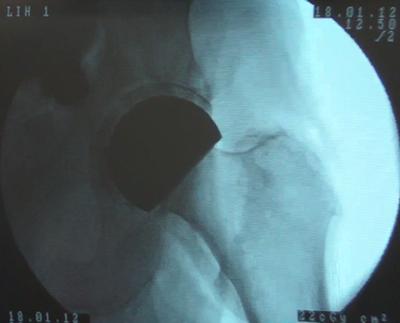Research challenge
Engineers at Finsbury Orthopaedics Ltd, a company making joint replacement implants, identified that new ceramic materials could allow the development of a strong, wear resistant, bone conserving alternative to larger metal-on-metal hip replacements. Finsbury called upon the expertise of bioengineers at the University of Southampton’s Bioengineering Science Research Group. A Knowledge Transfer Partnership (KTP) was set up with the Technology Strategy Board (TSB) to develop ceramic hip replacements, to create a treatment for young osteoarthritis sufferers.
Context
Certain designs of metal-on-metal bearing hip replacements have had higher than average failure rates. In all joint replacements, mechanical wear during normal activities generates microscopic particles known as wear debris. In metal bearing joints, this debris corrodes and releases metal ions, which can occasionally produce adverse biological reactions. These reactions are rare in many implant designs, but are most common in very worn joints, when more debris has been released, and in young female patients who have small diameter hips. Ceramic bearing materials offer excellent compatibility with the human body and are highly wear resistant, but the development of new implants which use ceramics requires careful pre-clinical evaluation and testing.
Our solution
We brought together academics and experts from industry to work on this challenge. Academic lead Professor Martin Browne, Head of the Bioengineering Sciences research group, Dr Andy Taylor (then Director of Finsbury Development Ltd, now of Aurora Medical Ltd) and researcher Dr Alex Dickinson (former PhD student, now a New Frontiers Research Fellow) came up with innovative implant concepts involving ceramic materials instead of metal, which do not react with the human body.
Their work led to the development of two alternative hip replacement systems, the DeltaMotion® cup (or socket) and the DeltaSurf® head (or ball), the first of which is now in clinical use. The team in Southampton also produced a set of computational tools to understand the biomechanical performance of existing implants, and to predict how new design concepts will perform. Furthermore, the partnership produced purpose-designed testing methods for pre-clinical analysis of novel implant concepts, where the innovative designs involved could not be tested in conventional ways.
What was the impact
More than 3,500 people have received DeltaMotion hips in Europe, Asia and Australia, after regulatory approval for their use was granted. At two years promising first clinical results in the challenging young, active patient group have been published in the clinical literature and Australia’s National Joint Replacement Register.
The Knowledge Transfer Partnership won the Engineering Excellence Award and the Best Partnership Award (South East Region) at the KTP Awards 2011, and was shortlisted at the 2009 Technology & Innovation Awards, run by The Engineer magazine. The project supported the formation of Aurora Medical Ltd at Southampton Science Park, for further medical device research and development. The analysis and testing techniques developed by the team are now used in the orthopaedics industry, and the partnership’s researchers have used this exciting case study to promote bioengineering science more widely to hundreds of school students. It has also supported interns in the research group who have gone on to engineering science careers in UK research and industry.


